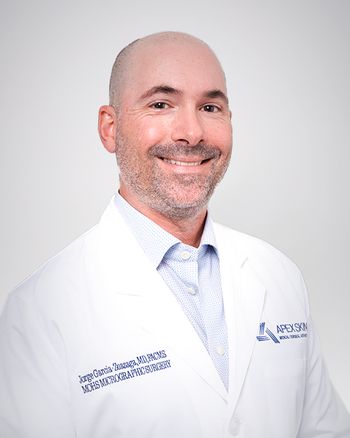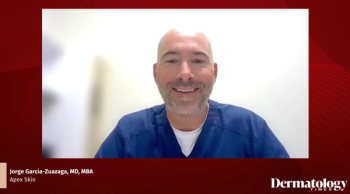
COVID-19: Alleviating team safety concerns and communicating to patients
As states begin to reopen-and patients return to healthcare providers-you, your team and your patients likely have a lot of questions regarding what the post-COVID-19 healthcare experience will be like. You can take these steps to alleviate team safety concerns and communicate safety changes to patients.
As states begin to reopen-and patients return to healthcare providers-you, your team and your patients likely have a lot of questions regarding what the post-COVID-19 healthcare experience will be like.
Specifically, how will you keep your team safe and limit their exposure? How will you do the same for your patients?
Your ability to effectively create these new protocols and communicate them to your team and patients will alleviate concerns and minimize confusion for everyone, and help create a safe environment for your team to deliver healthcare. Let’s take some time today to look at what concrete steps you can take in alleviating team safety concerns and communicating those safety changes to patients.
RELATED:
Alleviate safety concerns
You can start by reengineering your practice workflows to help protect your team members. For instance, if your practice has closed and is preparing to reopen, you can focus on how you might help your team prepare for the new normal. Things you might do to help alleviate safety concerns include mitigating workforce and patient anxiety via health checks, masking and the use of other PPE, social distancing, environmental services, right-sizing your operation, and communicating clearly and safely with your team. Let’s look a little more closely at each piece.
Health checks
To keep your team safe, you need to stay on top of team members’ health. While some restrictions are easing in states across the country, the lack of testing and appropriate contact tracing means you need to be performing health checks for each employee every day as they enter the practice. At a minimum, you should implement a protocol for temperature checks and health screenings, as well as asking employees to be aware of any instances in which they may have been directly exposed to COVID-19. Make sure you narrowly tailor your protocols to reduce the threat of COVID-19 infection. Employers should also ensure that medical information received from customers is stored in accordance with any applicable state information security law.
Masking and PPE supplies
Similarly, you may wish to make masks and other PPE supplies a priority. Employees will need to wear a mask all day. You can encourage them to use reusable, washable masks. You may also wish to encourage patients to bring and wear their own masks, for the protection and peace of mind of both them and your team members.
A large part of preparing for reopening may simply be ensuring that your PPE supply chain is in order, with a particular emphasis on masks, gloves, sanitary wipes, hand sanitizer, soap, and other supplies that you may go through more rapidly now than you had previously-and many of which may be more difficult to source in the current landscape.
Finally, for patients who may be demonstrating symptoms, remote treatment (whether virtually or in their car) may be an excellent option to consider for helping protect team members and other patients.
Social distancing
In addition to masking, effectively utilizing PPE, and incorporating other safety and sanitary measures, ensuring social distancing may help you protect both team members and patients. You can create social distancing in the waiting room by marking off chairs, for instance, along with placing social distance markers with tape on applicable floors.
You might also consider modifying your check-in and out process to bypass the waiting room altogether. You can accomplish this by asking patients to wait in their cars until you call them in for their appointment time, and then directly escort them to their exam room. Instead of checking patients out at the front desk, consider completing the entire checkout process in their exam room. Modifying your patient workflow will keep staff and patient interaction to a minimum.
Environmental services
Determining how you utilize environmental services in your practice may likewise be a significant part of alleviating safety concerns. For instance, you may want to define your cleaning, disinfecting, and supplies protocol, as well as evaluating your attire protocols.
When it comes to cleaning and disinfecting, you may decide to hire a service to ensure it is done both efficiently and effectively. Hiring a service may also be a better use of resources. Similarly, you may want to have hand sanitizing and handwashing stations readily available in trafficked areas throughout your practice. You should also consider adding applicable signs for patients (such as reminders not to touch their faces, to wash their hands frequently, and so forth). Finally, you may want to define protocols that delineate how frequently and at what times highly trafficked areas will be wiped down with sanitizing wipes.
You may also desire to delineate what your office attire will look like for team members. Some practices may decide to have team members change into and out of their scrubs at the start and end of each shift, respectively, just as some practices may choose to hire laundry services so that team members don’t have to take anything exposed to patients home at night.
Right-sizing your operation
Right-sizing your operation to match current demand may be another way to protect your team members and patients. Right-sizing means matching your hours of operation and staffing to match demand. To start, consider filling appointments only on certain days or between certain times. For some practices, this might mean filling appointments by starting at lunchtime and working in each direction, so that lighter days start later and end earlier. Regardless of what process you find works best for you, right-sizing your operation can help limit the number of hours in which team members are exposed.
Communicating with your team
Finally, how you choose to communicate with your team keeps them protected and aware of the steps you are taking to ensure their safety. Rather than in-person staff meetings, for instance, consider using a wide range of communication channels and materials, such as email, employee portals, video, virtual live events, posters or digital displays, even text messages.
Communicate your plan to patients
In particular, there are two elements you should focus on to effectively communicate your safety plan to patients:
- Maintain your patient base and referral sources.
- Communicate your plan to patients and referral sources.
The first point is essential, because if you haven’t maintained your patient base and referral sources, you may not have any patients to whom you need to communicate your safety plan. Assuming you have kept your patient base and referral sources, however, let’s look at what that second point may look like for your practice.
Utilize all communication methods
Even more so than with your team members, it may prove incredibly important that you utilize every communication method available to communicate with your patients. This includes social media, direct mail, email, updates to any and all relevant pages of your website (and potentially including a banner on all pages that links to your COVID-19 specific information), updates to Google and other business listings (such as Yelp), and updated in-office signage. To ensure that all patients have seen the updated information, you may need to spread it far and wide, utilizing every communication channel available to you.
Utilize targeted messages
Of course, utilizing every communication method available may prove cost-prohibitive, in which case you can prioritize using targeted messages to patients who are more likely to need the information. For instance, you may wish to consider first communicating with those medical and cosmetic patients for whom remote or telemedicine options will not work, and who are in most need of in-office care, and then gradually widening your reach as much as you can.
Be clear with the information you are communicating
Most important of all is which information you choose to communicate and how you are able to communicate that information. As you develop your communications, consider including:
- Your hours of operation. Consider explaining to patients how they can make an appointment or how previously canceled appointments will be rescheduled.
- The scope of services you are currently offering. Delineating which services are being offered via telemedicine and which services are being offered for in-patient visits only may help limit confusion and give patients options.
- Your safety standards. If you are utilizing outside environmental services, for instance, conveying that information may help put patients at ease, as can outlining the safety protocols you are introducing specifically in response to the novel coronavirus.
- Patient and appointment flow. Explaining any considerations you are introducing to reduce touchpoints for patients and team members can also help put patients at ease. As discussed above, consider identifying how waiting room area processes are changing, how social distancing requirements will be maintained, and how check-in and checkout processes might be changing.
- Health checks. Identifying how you will keep team members from coming to work sick, for example, by utilizing daily health checks can help put patients at ease. Similarly, consider communicating your mask policy and encourage patients to bring (and wear) their own.
Establishing new protocols and effectively communicating those plans with your team and patients can be overwhelming. However, consider what Dale Carnegie said: “An hour of planning can save you ten hours of doing”. In this time of uncertainty, where we are trying to define our new normal, take time to plan-and don’t underestimate the value of communication. Doing so will return benefits tenfold.
Disclosures:
Todd is the Chief Executive Officer of VitalSkin Dermatology, a world-class dermatology and aesthetics practice management firm., Mr. Petersen has over two decades of C-suite experience, including CEO, COO, CFO, and CHRO roles. He is a growth expert with a passion for new entrepreneurial challenges, revenue growth, improving operations, and building teams and partnerships.
Newsletter
Like what you’re reading? Subscribe to Dermatology Times for weekly updates on therapies, innovations, and real-world practice tips.
















